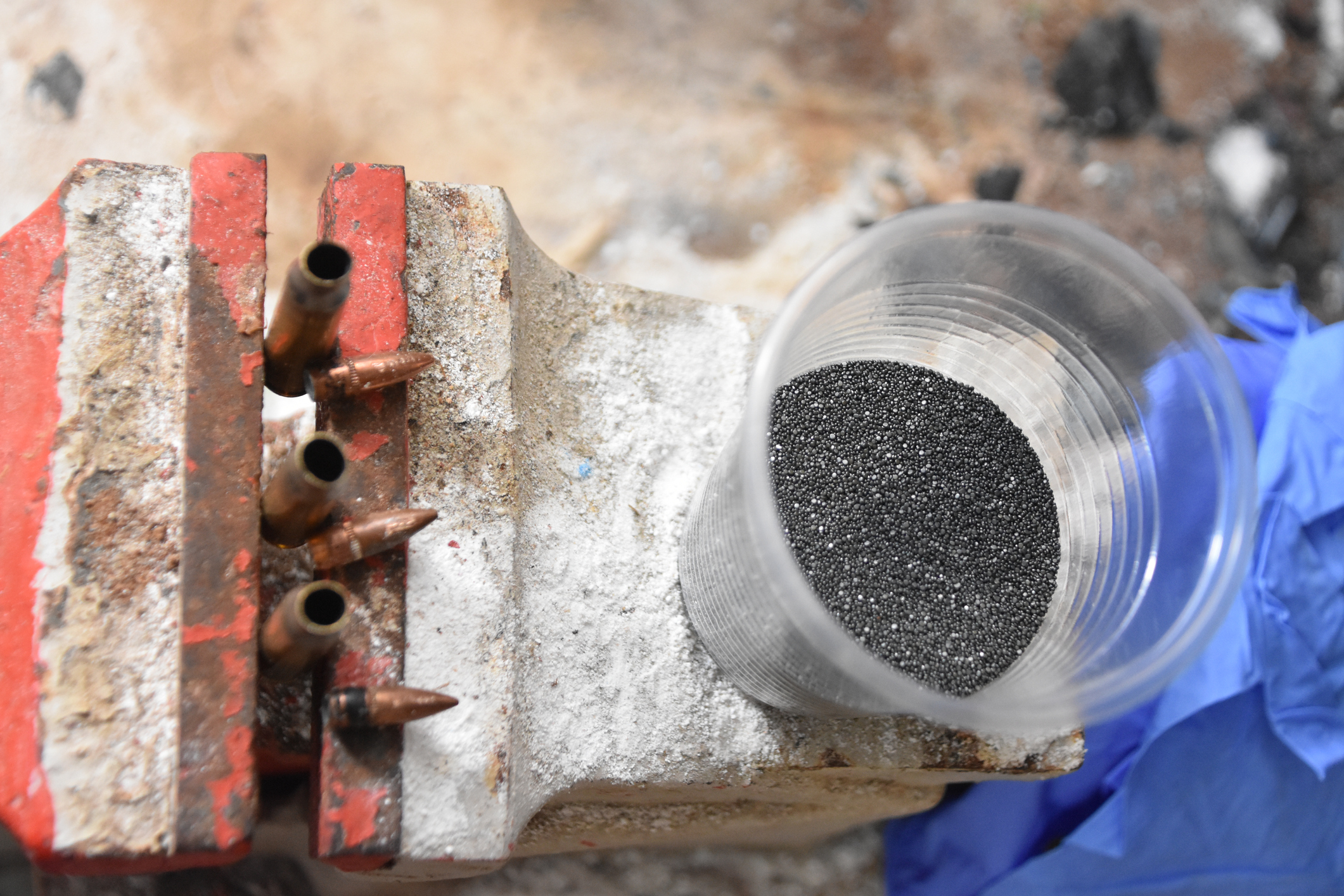9 Easy Facts About Muzzleloading Powder Described
Wiki Article
An Unbiased View of Imr Powder
Table of ContentsOur Imr Powder DiariesHodgdon H4350 for BeginnersUnknown Facts About Muzzleloading PowderAll About Muzzleloading Powder
The gaseous propellant decomposes right into less complex molecules in a bordering fizz area. Energy is launched in a luminescent outer flame zone where the simpler gas molecules react to create conventional burning products like vapor and carbon monoxide gas. The foam area acts as an insulator reducing the price of warm transfer from the fire area into the unreacted solid.Propellants designed for a minimum heat transfer pressure may stop working to sustain the flame area at lower stress. The energetic parts made use of in electric propellants consist of nitrocellulose (one of the most usual), nitroglycerin, nitroguanidine, DINA (bis-nitroxyethylnitramine; diethanolamine dinitrate, DEADN; DHE), Fivonite (2,2,5,5-tetramethylol-cyclopentanone tetranitrate, Cy, P), DGN (diethylene glycol dinitrate), and also acetyl cellulose.
Deterrents consist of centralites (balanced diphenyl ureaprimarily diethyl or dimethyl), dibutyl phthalate, dinitrotoluene (poisonous and also carcinogenic), akardite (asymmetrical diphenyl urea), ortho-Tolyl urethane,: 174 and polyester adipate - gun powder. Camphor was previously utilized but is currently obsolete. Stabilizers avoid or decrease self-decomposition. These include diphenylamine, petroleum jelly, calcium carbonate, magnesium oxide, salt bicarbonate, as well as beta-Naphthol methyl ether Out-of-date stabilizers include amyl alcohol and also aniline. These consist of tin metal and compounds (e. g., tin dioxide), and also bismuth steel as well as compounds (e. g., bismuth trioxide, bismuth subcarbonate, bismuth nitrate, bismuth antimonide); the bismuth substances are favored as copper dissolves in molten bismuth, creating weak and also conveniently removable alloy. Lead foil and also lead compounds have been phased out because of poisoning. Before projectiles departure, a small pre-flash may occur from gases leaking past the projectiles. Complying with muzzle exit, the heat of gases is typically sufficient to emit visible radiation: the main flash. The gases increase yet as they pass through the Mach disc, they are re-compressed to create an intermediate flash.
g. hydrogen and carbon-monoxide) might follow when they combine with oxygen in the surrounding air to generate the additional flash, the brightest. The second flash does not generally accompany tiny arms.: 5556 Nitrocellulose has insufficient oxygen to entirely oxidize its carbon and also hydrogen. The oxygen deficit is boosted by enhancement of graphite and natural stabilizers.
Fascination About Gun Powder
At high temperature level, these flammable gasses will stir up when turbulently mixed with atmospheric oxygen beyond the muzzle of the gun. During evening interactions, the flash produced by ignition can disclose the location of the weapon to opponent pressures: 322323 and cause short-term night-blindness amongst the gun team by photo-bleaching aesthetic purple.Artillery muzzle flash up to 150 feet (46 m) from the muzzle has actually been observed, and also can be reflected off clouds as well as show up for ranges up to 30 miles (48 km).: 322323 For artillery, the most efficient technique is a propellant that creates a huge proportion of inert nitrogen at reasonably low temperatures that weakens the combustible gases.
Before the use of triple based propellants, the common technique of flash decrease was to add not natural salts like potassium chloride so their certain heat capability may minimize the temperature of combustion gasses and their finely divided particulate smoke may obstruct visible wavelengths of radiant power of combustion.: 323327 All flash reducers have a drawback: the manufacturing of smoke.
These extrusions can be reduced right into brief ("flakes") or long items ("cables" several inches long). Cannon powder has the biggest pieces.: 28: 41 The United States Navy manufactured single-base tubular powder for marine weapons at Indian Head, Maryland, starting in 1900. Similar procedures were made use of for United States Army production at Picatinny Arsenal beginning in 1907: 297 as well as for manufacture of smaller sized grained Improved Military Rifle (IMR) powders after 1914. ramshot powder.
Some Known Incorrect Statements About Ramshot Powder

The mix was after that fed with a press extruding a long tubular cable kind to be reduced right into grains of the preferred length.: 3135 Alcohol as well as ether were then evaporated from "green" powder grains to a continuing to be solvent concentration in between 3 percent for rifle powders and 7 percent for big weapons powder grains (https://www.ted.com/profiles/38955373/about).
Grains were covered with electrically conductive graphite to reduce generation of static electrical energy throughout subsequent blending. "Whole lots" having even more than 10 tonnes of powder grains were blended via a tower plan of mixing hoppers to reduce ballistic distinctions. Each mixed lot was after that based on evaluating to establish the right filling fee for the wanted performance.: 3541: 293 & 306 Military amounts of old smokeless powder were occasionally revamped right into brand-new whole lots of propellants.: 39 Through the 1920s Fred Olsen operated at Picatinny Arsenal try out ways to salvage bunches of single-base cannon powder made for Globe War I.

The 7-Second Trick For Muzzleloading Powder
The balls can be consequently customized by including nitroglycerine to enhance energy, squashing in between rollers to a consistent minimum measurement, find here finish with phthalate deterrents to hamper ignition, and/or polishing with graphite to improve circulation qualities during blending.: 328330 Modern smokeless powder is created in the United States by St. Marks Powder, Inc (https://www.pubpub.org/user/james-connor). Artillery: Its Beginning, Heyday and Decrease (1969) electric powder "Laflin & Rand Powder Company". Du, Pont. Obtained 24 February 2012. Watters, Daniel E. "The Great Propellant Controversy". The Gun Zone. Archived from the initial on 22 July 2013. Gotten 29 June 2013. (PDF). Nevada Aerospace Scientific Research Associates. Fetched 19 January 2017.Report this wiki page